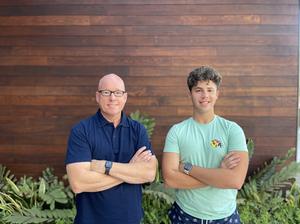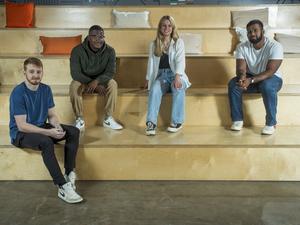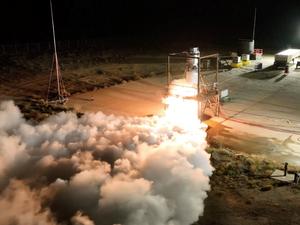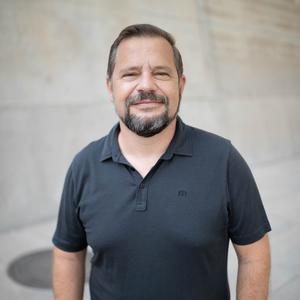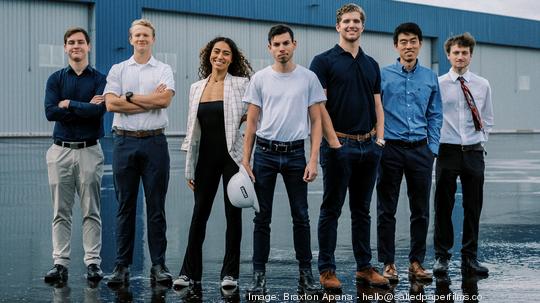
Christian LaRosa wasn’t necessarily looking to be an entrepreneur. But as the former Arizona State University engineering student worked to address a need that he saw in rocket manufacturing, it became clear that what he was working on was going to be a product — and one that would be in demand beyond his own industry.
“I’m an engineer by training, by practice,” LaRosa said. “I’m a founder by necessity.”
The necessity was finding a way to overcome the limitations of 3D printing, whose usual methods and machines are not capable of making the kinds of large-dimension components needed by aerospace builders. The company he founded, Rosotics, changes all that, he said.
After about three years in stealth mode, Rosotics is ready to roll after receiving $750,000 in pre-seed funding. The investment is led by Draper Associates — an early-stage venture capital firm based in San Mateo, California — along with participation from Correlation Ventures, Vibe Capital and Sequoia Capital.
LaRosa, who is 23, also was an AZ Inno Under 25 honoree earlier this year.
During the past three years, LaRosa and his Rosotics team have been fine-tuning an expandable and portable 3D printing machine called the Mantis, modeled after the insect in the way it folds — like origami, LaRosa said — into a compact space a little taller than a person.
The machine uses what's known as rapid induction printing, which replaces the traditional 3D printing process by which metal wire is fed through a nozzle and liquified using a laser focused on a small area. Rapid induction instead heats metals by using a coil in the nozzle that induces a magnetic field and takes advantage of the metal’s capacity for conducting electricity so that heat is generated within the metal itself.
Rosotics looks for inroads in aerospace sector
The advantages, LaRosa said, include increased energy efficiency and speed along with the ability to print tough grades of metal. And with the Mantis machine’s expanding design, the process can be used to make larger prints than have ever been possible before — at dimensions measured in dozens of feet or meters, LaRosa said.
It could make 3D printing feasible for the aerospace manufacturing, which LaRosa said is long overdue for a way to replace the welding, steamrolling and other inefficient methods that are inadequate for the needs of the rapidly advancing field.
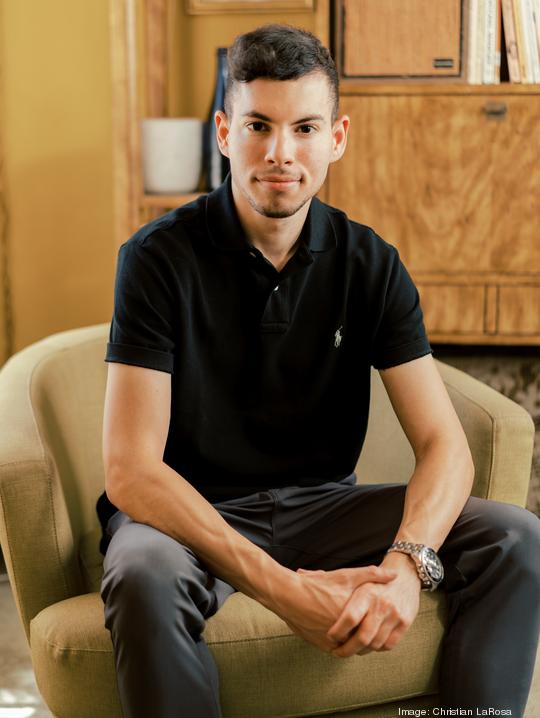
“It’s beyond the scope of just a nice to have, a novelty; it’s something you need to be doing,” LaRosa said. “Aerospace needs this. … The time that this technology needed to be here — it’s not today or tomorrow. It needed to be here yesterday.”
And while Rosotics is starting out in aerospace — with a pilot program planned with “a very major player in the rocket business” in the first quarter of 2023 that he declined to name — LaRosa said the company’s technology will be expanded into a variety of industries that use heavy structure manufacturing.
That’s a big part of what attracted Draper Associates’ attention.
"Rosotics makes the largest metal 3D printers in the world and they will fundamentally change aerospace manufacturing forever,” Draper Associates Founding Partner Tim Draper said in a statement. “Their proprietary process, Rapid Induction Printing, allows customers of the company to easily iterate and produce novel vehicles for space and transportation. We at Draper Associates are thrilled to be part of their journey."
Rosotics working out of Falcon Field hangars
With the new funding in hand, LaRosa said his company is ready to start moving very quickly to spread its reach, with the money devoted to hardware deliveries.
LaRosa describes Rosotics’ business model as "hardware as a service," with the idea that as the hardware continues to improve, customers will be able to take advantage of the latest developments.
LaRosa isn’t naming the clients he’ll be working with yet, but the list of companies playing an advisory role to the company include some heavy hitters in aerospace — Boeing, Lockheed Martin and Blue Origin among them.
Also among the advisers is Jim Cantrell, the CEO and co-founder of Phantom Space in Tucson — who was previously the first vice president of business development at SpaceX and who also worked at the French Space Agency and at NASA’s Jet Propulsion Laboratory. Cantrell said Rosotics is extending the revolution brought about by additive manufacturing, another term for 3D printing.
“Their new approach to additive manufacturing combines robotics and 3D-style printing into one unit that in essence has no scale limitations,” Cantrell said in a statement. “This capability, in the long run, will revolutionize the manufacturing of metallic structures in ways that we cannot even imagine today. Rosotics is building the future of manufacturing right in my Arizona backyard and I am very proud to be advising them, and to use their capabilities in my aerospace and automotive enterprises."
Rosotics is operating out of a group of hangars at Falcon Field Airport in Mesa, where it is a neighbor of Boeing and Virgin Galactic. LaRosa said the company has a “pretty lean” headcount of about 10 made up of people from Arizona State University as well as some from out of state. LaRosa expects growth to come and said he’s eager to expand with problem solvers who are “deeply inspired by wonder and what the future can be like.”
The startup’s chief operating officer, Austin Thurman, also comes to the company from ASU, where he met LaRosa when they were both students. He, like LaRosa, said the company has ambitious plans.
“The beautiful thing is that although we are starting in aerospace, our vision is that we will soon be able to create some part of everything,” Thurman said in a statement. “Mantis is just the beginning, and as our process becomes more dynamic there will be no size limit to what we can build and where we can build it.”
